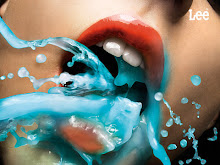 New York Movie/ Edward Hopper
New York Movie/ Edward HopperPainting Analysis
The painting shows a scene within a cinema. A movie is playing, with couples watching the scene being played. Our view of this is skewed however, as our attention is focused on a single woman standing on the outskirt of the room. The usherette is leaning against a wall, staring at the ground, deeply in thought. She stands in a position from which is off angled from the movie being shown, the audience as well as the staircase leading up. However, we still feel that the woman is linked to the film and the cinema, through her leaning against the room wall for support as she thinks and by the wall light which is engulfing her creating a sense of warmth. The usherette’s awkward placement in the scene as well as general disposition suggests a darker mood. The lack of perspective from which she can view these other subject matters, suggests an uncertain future. The painting shows a high use of contrast and highly textured materials such as carved stone columns and heavy draped curtains. The use of contrasting light helps present focal points for the painting.
The warm light surrounding the woman while she stands in the room suggests that she hold a close link to the world of film, though her view of the screen is disjointed. There may be a sense of disconnection between the woman and the cinema, as both try to fight for the attention of the audience.
Narrative
A Theater for a Lonely Actress trying to find her Voice in the World of Cinema
Site
 Urban generic site in New York City
Urban generic site in New York CityConcept
My concept will focus on three main aspects:
1. Film: The idea of moving images based around a set frame. How is a film different from live theatre or photographs? How is the audience’s view of film different from live performance?
2. Perspective: Edward Hopper uses perspective in his painting. It is used to direct the viewer to certain aspects of the painting, while diverging from others. Within the painting, perspective controls what the usherette is able to see: her view of the film, up the stairs and to the audience.
3. Contrasting Light: The use of light in the painting allows areas of the painting to be focused on more than others. While the painting is mostly dark and shadowy, we see areas of brightness: such as the wall lights to accentuate the emotions of the key figure.
First designs



No comments:
Post a Comment